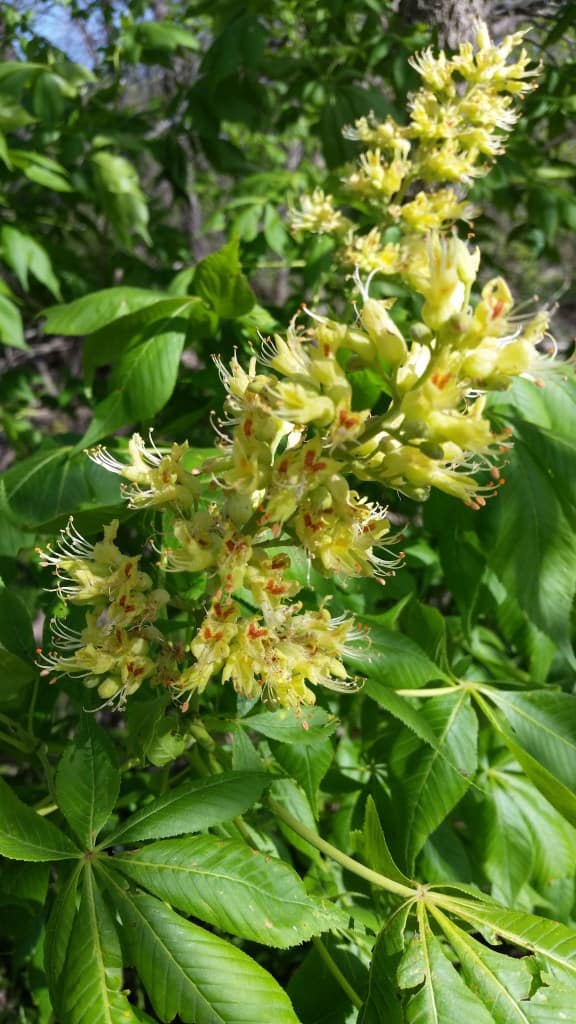The Ohio buckeye (Aesculus glabra) is not what most people think about when they think of spring in Kansas, or maybe anywhere. Most think of the bulbs of Holland, planted here or there in a landscape bed, or the redbuds of the oak-hickory woodlands of eastern Kansas. However, here in the northeast corner of the state, the Ohio buckeye is a common sight on a hunting trip for morels.

I first came across this beautiful tree when doing just that, after moving out here from Central Kansas 10 years ago. Although I had learned about the different buckeyes common in the landscape trade, I knew little about the buckeye or its native range. It is common through the Midwest- sliding down through the lower Great Plains.

The Ohio buckeye has 5 to 7 leaflets per leaf and has large, yellow-green flower panicles borne in mid-April, when the morels are first coming to life. The leaves arrive first, often getting caught by a late frost, but reviving with little or no damage. The flowers are sought after by bees and the early hummingbirds of April. This small tree (20 to 40 feet wide and tall) can be found growing in moist areas along river bottoms and streams. It is an understory tree, growing well under the larger hickories and oaks of eastern Kansas.

The Ohio buckeye is so named for its seed, which resembles the eye of a male deer or buck. The seeds have been carried in the pockets of pioneers and travelers for years, as a good luck charm and supposed cure for rheumatism. All parts of the plant are POISONOUS however, and consumption is not recommended. The tree has been cut down often by farmers to prevent poisoning of livestock. Native Americans would sometimes ground the nuts to use in ponds to stun fish for easy fishing.

The current Kansas state champion is on the Kansas State University campus near the intersection of Vattier and Manhattan. It is approximately 50 feet tall and 40 feet wide. The wood of the Ohio buckeye has been used for artificial limbs, until synthetic materials became common.

While this tree is not recommended for open landscapes, it can be used along wet areas in understory cover, a good plant for bees and hummingbirds. Another similar species is the Ruby Red Horsechestnut. This tree grows 35 feet tall and wide and can be used in more open landscapes. It blooms red in early spring and is a favorite of the early hummingbirds.

Happy Planting!



